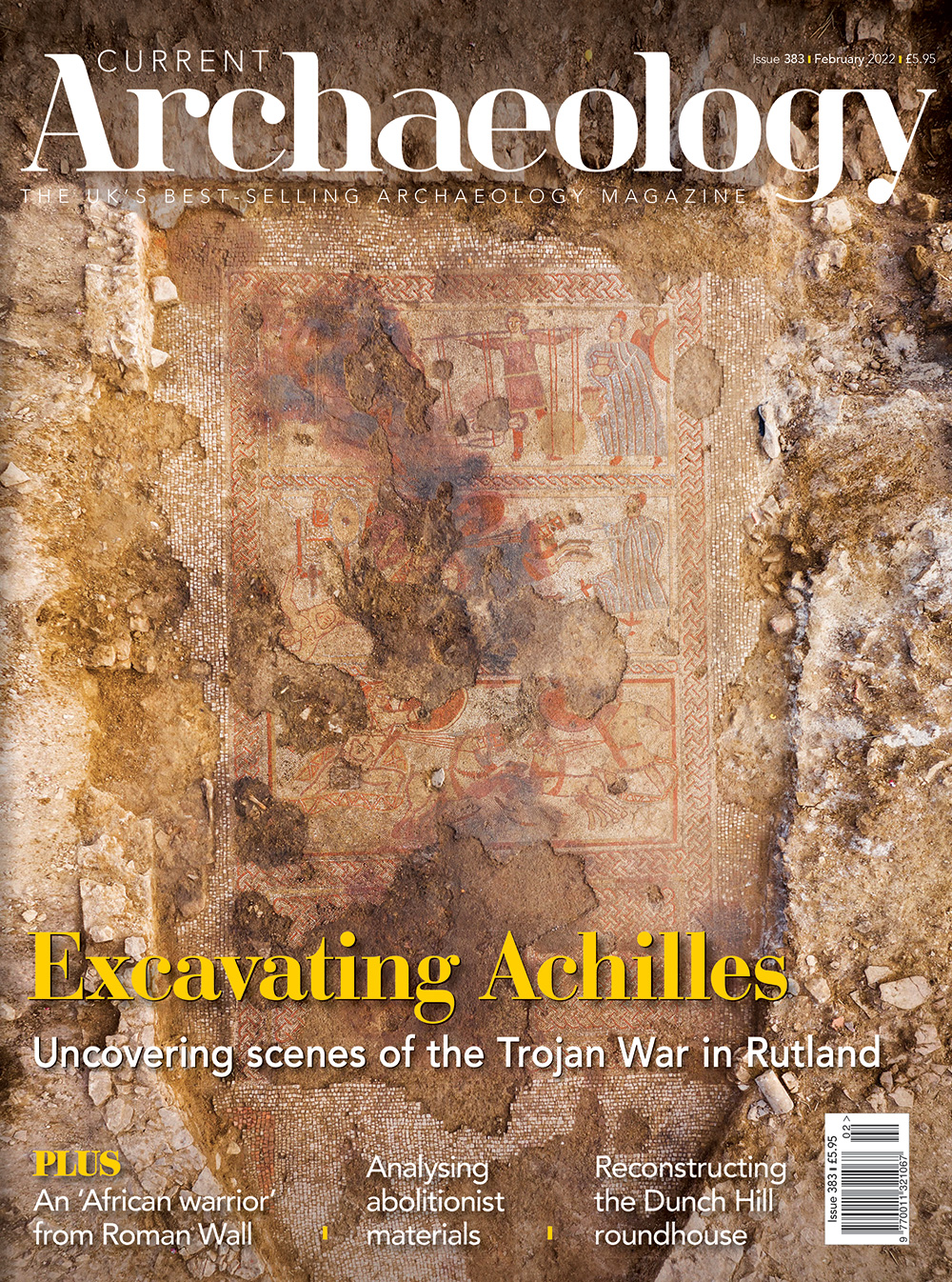This month’s cover showcases a spectacular Roman mosaic unearthed in Rutland, its colourful imagery preserving vivid scenes from the story of the Trojan War. The mosaic echoes episodes from Homer’s Iliad, but with idiosyncratic elements. Our special report asks: what can it tell us about the transmission of Classical literature in Roman Britain?
Remaining in Britannia, our first feature heads west to Wall, in Staffordshire, once home to a key Watling Street staging post and Roman town called Letocetum. New analysis there of a small lead figurine has shed intriguing light on Romano-British artistic depictions of people from sub-Saharan Africa.
Wall was also the site of Roman fortifications, and we remain with martial matters as we head to the military training zone on Salisbury Plain. Volunteer veterans from Operation Nightingale have worked with Wessex Archaeology to excavate a Bronze Age roundhouse at Dunch Hill – remains that have now formed the basis for a new experimental reconstruction at Butser Ancient Farm.
We next travel into Wales to tour some of the stunning medieval wall paintings still surviving on church walls, many of them only recently rediscovered beneath multiple coats of whitewash applied during the Protestant Reformation.
From iconoclasm to ideology, the focus of our final feature is a campaign chest that once belonged to the abolitionist activist Thomas Clarkson. Cutting-edge technology has revealed fascinating details of its contents: West African textiles that Clarkson had used to argue against the slave trade.

